
views
Having the Right Materials

Consider what you would use a day planner for. There are many different kinds of day planner, suited to different tasks and personalities. Some day planners are very simple lined notebooks; other day planners have different sections for different kinds of tasks. Take a few moments to think about why it is you want to use a day planner and what you would use it for. It is very important to consider these questions because you will be more likely to use your day planner if it becomes your sole planning tool: keeping more than one day planner at a time will be confusing and will defeat the purpose. Ask yourself: Will I need a section for phone numbers? Will I use it primarily for remembering appointments? Do I want a day planner that lasts for more than one year? Do I want my day planner to replace another organizing tool (such as my to-do lists)? Do I want a simple, plain notebook, or one with lots of different features and sections? Would I rather have a day planner that is small enough to fit in a pocket or one that is large enough to handle notes from my meetings? Do I want a day planner that provides more space for weekdays, or will I need my day planner primarily for weekend activities?
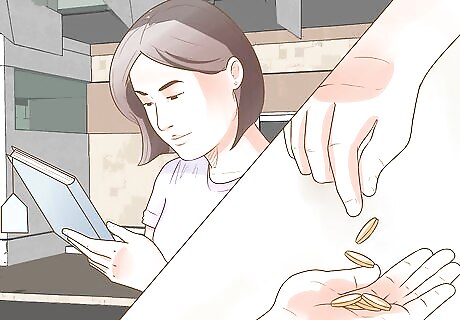
Purchase a planner that suits your needs. Day planners can be purchased at a variety of stores, such as office supply shops, stationery stores, calendar stores, and online. They can cost anywhere from just a few dollars to over $50. While the aesthetics of your day planner are important, pay attention first and foremost to the layout and sections of the day planner. Make sure that the day planner you purchase is organized in a way that you find pleasing and that makes sense given your lifestyle and responsibilities.
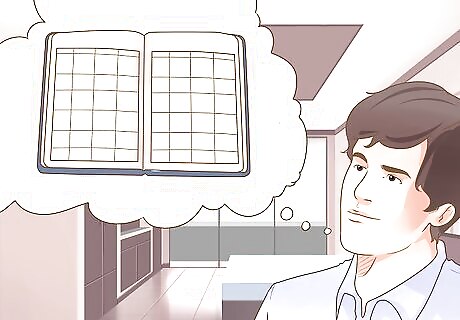
Consider the aesthetics of your day planner. Even though function is the most important thing, you will be more likely to get in the habit of using a day planner that you find attractive and pleasing to the eye. Some day planners are very simple, with just a plain black leather cover. Others are bright and whimsical, with lots of designs and elaborate patterns. Any aesthetic is fine as long as it accords with professional decorum in your workplace. Pay attention to the aesthetics of the inside of the planner as well as the outside. Some people prefer unlined pages to lined pages, for example. Some people like symmetry; others might like more dynamic layouts. You might also prefer certain typefaces to others. Make sure that you find your day planner pleasant to look at--inside and out--in order to further incentivize your daily use of it.

Have a ready supply of pens and pencils. Your day planner won't do you much good if you can't write anything down in it. Be sure to keep lots of sharpened pencils and working pens in places you are most likely to use your day planner. These include: Your briefcase or work bag Your purse Your work desk Your desk at home Close to your landline phones If you are someone who consistently loses pens and pencils, consider storing an emergency pencil inside your day planner itself. Some day planners even have a little bit of storage space you could use for a spare pencil.
Using Your Day Planner Effectively
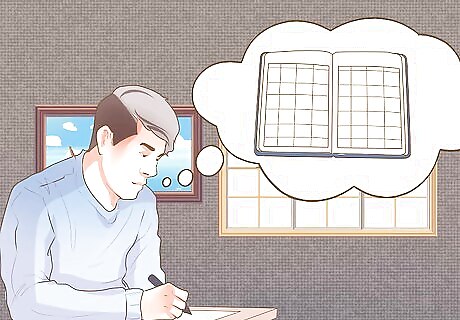
Resolve to use a day planner every day. People who make a solid commitment are more likely to be able to keep those commitments. Habits are very difficult to change, but telling yourself that you are resolved to do one small thing differently will help you develop a new habit. Remember that good habits are more likely to form when you are concentrating on just one at a time, so do not overload yourself with new time management habits. For now, focus solely on keeping your day planner. Try to think of your planner as a guide to your day.

Talk to a friend about your wish to use a day planner. People are more likely to stick to new habits when their communities are aware of their resolution and can support them. Talk to a friend or coworker about your new resolution. Perhaps your friend will also want to begin this new and useful habit. You can remind each other to update it when necessary.

Store your day planner in the same place at work and at home every day. Use your day planner as your only calendar: if you use two day planners simultaneously, you will quickly lose track of your responsibilities. However, this can be tricky because you will need to enter items into your day planner at work and at home. To make sure that you always have your day planner with you, designate one storage place for work and one storage place for home. Never place your day planner anywhere else: consistency is key to developing this habit. Great places to store your day planner at home include a table next to your landline, your work bag or briefcase, or next to your cell phone and car keys. Great places to store your day planner at work include on top of your desk, the central drawer of your desk, next to your work phone, or in your briefcase.

Write reminder notes to get in the habit of bringing your planner with you to and from work. When you are first getting used to using your day planner, you will likely forget to bring it with you to work or home. To prevent this from happening, write yourself reminder notes in prominent places at work and at home. Studies show that a post-it reminder is one of the most effective ways to encourage a particular behavior. Use this method on yourself by leaving post-its asking "Have you remembered your day planner?" in places you are sure to see. These include: Your laptop On top of your desk Next to your phone On your door On your kitchen table On the bathroom mirror You can remove these notes after you have developed the habit of bringing your day planner with you to work and back home.

Transfer information into your planner. When you first purchase a planner, you will have to enter in a great deal of information. You will likely have previously scheduled appointments, ongoing work tasks, and random bits of information floating around. Take an hour or two to consolidate all this scattered information into your day planner. This will allow you to practice entering information in the correct way. It will also allow you to plan your time more effectively moving forward. Things to enter into your planner include: Important contact information for your family, friends, colleagues, and clients Work meetings Your class schedule Deadlines for work or school projects Shift changes (if you work a job without a consistent schedule) Medical and dental appointments The birthdays of your loved ones Special work events Special personal events Key dates for your hobbies or extracurricular activities (e.g. the dates of your play rehearsal or your zumba class)

Consult your day planner every morning. Before you head in to work each morning, examine your day planner for upcoming appointments, meetings, and responsibilities. Take a minute to consider whether there are any tasks you need to add to your schedule or any tasks you might cross off or reschedule. Use this time to plan your day so that you can manage your time wisely once you arrive at work. Try to schedule your most mentally exhaustive tasks during parts of the day when you're most alert and productive. You can even start planning out your schedule the night before! Think about your tasks and what you'll need to accomplish during the next day or week.
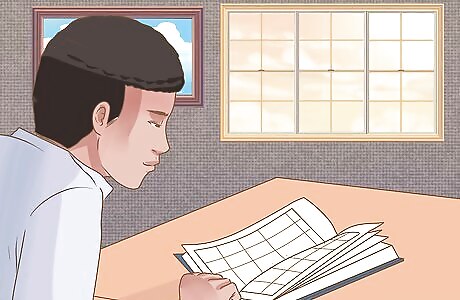
Consult your day planner every afternoon. Before you leave work for the day, consult your day planner again. Make sure that you have accomplished everything you have set out to do for the day. Consider whether any new items should be entered into your day planner for the coming week. Always update your day planner before you leave work to ensure that you are keeping track of your work responsibilities.
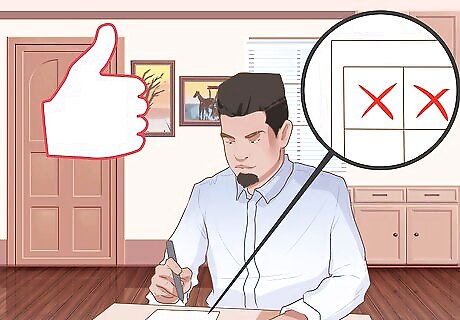
Use positive reinforcement to keep yourself motivated. Think of your day planner as a positive item in your life, not as a drag or a bore. Use your planner as a means of rewarding yourself for accomplishing tasks. Soon you will aim to finish tasks simply for the pleasure of crossing an item off of your to-do-list. In order to keep yourself positively reinforced, you should: Cross off all accomplishments and appointments as you finish them. When you are feeling low, take a look at everything you have crossed off and feel proud of everything you've done. Give yourself a reward for accomplishing a certain number of tasks. Allow yourself a small treat for every 5 items you cross off your day planner. For example, treat yourself to a coffee or a short walk once you have hit your desired goal. This will motivate you to use your day planner properly as well as to accomplish your tasks. Do something pleasant when you consult your day planner. Try not to think of your time consulting your day planner as a chore. Instead, look at it as a key productivity tool. In order to associate your day planner with positive feelings instead of negative ones, do something pleasant every morning and afternoon when you look at your planner. Drink a cup of delicious coffee, have a chocolate, or listen to your favorite song. Your brain will soon associate your planner with positive feelings. Give yourself a special treat for every week you use your day planner properly. While you are still in the early stages of keeping your day planner, you might need to give yourself some extra motivation to bring your day planner with you and update it each day. For every week where you remember to bring along and update your day planner, do something extra nice for yourself: buy an ice cream, go to a movie, or have a drink with friends. In a few weeks, you will be in the habit of remembering your day planner at all times. Write positive things in your day planner as well as your more serious responsibilities. By using your day planner to remind you of your favorite activities (having lunch with a friend) as well as your not-so-favorite activities (seeing the dentist), you will be more likely to stick to your new habit.
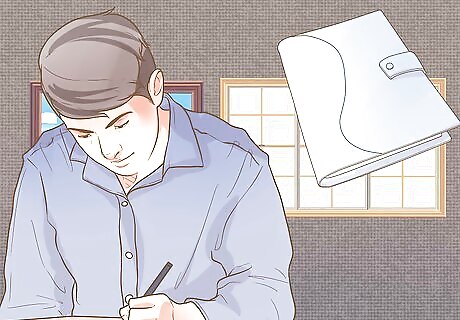
Continue to update your day planner as necessary. During your morning and evening check-ins, you should enter all of your new to-do lists, appointments, meetings, and deadlines. You can also update your day planner as new tasks arise. Keeping your day planner updated will help you manage your time more effectively and will prevent you from feeling too overwhelmed. By writing a task down, you no longer have to keep it in your head, which helps to prevent those terrible feelings of nagging and doubt. If you find yourself getting overloaded, shift some items into a separate "backlog" category that you can work your way through at an easy pace. Don't demotivate yourself by staring at tasks that can never be accomplished in a normal workday.

Be patient. New habits can sometimes take two or more months to become fully automatic. Until the habit is ingrained, you might experience some forgetful times when you leave your day planner at home or forget to enter an appointment. Be patient and forgiving with yourself. Remember that habits take time to form, and that the occasional slip-up will not affect your ability to form a new habit. It might be useful to have a back-up plan in place for those times when you've forgotten your day planner at home. For example, you might enter new work appointments on post-it notes and bring those home with you to enter. For extremely important events and deadlines, you can also use an online task manager to send you timely reminders: that way, you will not forget a key date even if you forget your planner.










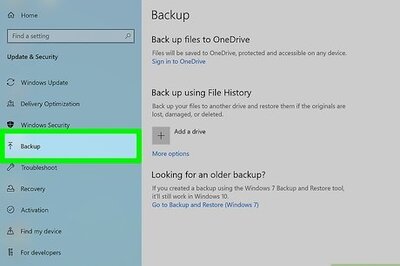








Comments
0 comment